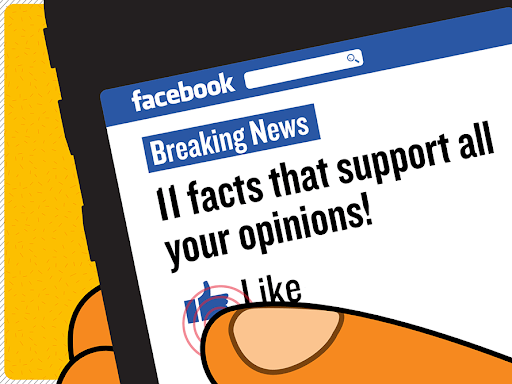There is Hope: Avoidance of Echo Chambers Growing

Image Courtesy of Medium
By Jeremy Perillo
Due to the heightened polarization and partisanship within the American political environment and the role that social media continues to play in that, one would think the echo chambers produced by social media habits would be increasing at an exponential rate. However, there are some Americans who are breaking out of their echo chambers searching to diversify their interactions online and news sources.
But first, what are echo chambers and why are they bad? An echo chamber, in a social media context, is when an individual forms a group of like-minded users framing and reinforcing shared beliefs, opinions, and perspectives. It is extremely easy for users on social media to form echo chambers, sometimes not even intentionally. This behavior is inherent to most social networking sites— like Instagram, Twitter, Facebook, and TikTok— as many individuals choose what they want to see by following desired pages or accounts. Sometimes, these encounters are based on social media algorithms where social media sites will use your interactions, such as favorited posts, as a means to reintroduce similar content on your feed, without a user even knowing. It is a business practice that all social media sites use, and is being blamed for one of the chief causes of polarization.
Don’t like what someone is saying? They can be unfollowed. Don’t like the “other sides” news sources, whether they are too liberal or too conservative? Don’t read their articles or watch their programming. This practice has become more than just expressing our individual preferences, it has resulted in walling off outside opinions, often creating intolerance when it comes to views that do not match up with your own.
In a Wired article, “How Some Americans Are Breaking Out of Political Echo Chambers,” Matt Fuchs examines the tendency of ordinary Americans who are trying to expand their political acumen. He interviewed Sarah Candler, a seventh grade English teacher from rural Tennessee, who began her journey of breaking down her echo chamber when a student in her class, after echoing pro-Trump sentiments with a majority of their classmates, asked “Who’s a Democrat, anyway?” Candler and a lone girl in the class raised their hands.
Fuchs also interviewed Alan Staney from Tallahassee, Florida, who voted for both Barack Obama and Donald Trump in both of their elections. Being someone who has felt “politically homeless” most of his life, Staney found certain sites that seek to bring all perspectives to attention helpful in understanding perspectives that were outside his own. Sites like AllSides, FlipSide, and Gound News all offer their users the opportunity for more transparency in the news that they are consuming. AllSides, for example, shows its users issues that are occurring in the news and identifies what the left, right, and center news outlet headlines are on the issue. Ground News shows users headlines of issues, and what percentage of left or right news organizations are covering the story. These sites offer an opportunity for individuals to exit their information silos and become more engaged with their news indulgences.
As Americans become more polarized, so too do their news sources. If more individuals challenged their beliefs and perceptions by engaging outside of their echo chambers, the public square can become a healthier place for dialogue. Until then, few Americans, like Staney and Candler represent a small proportion of consumers who want a better dialogue with political discourse, something social media discourages by design.






